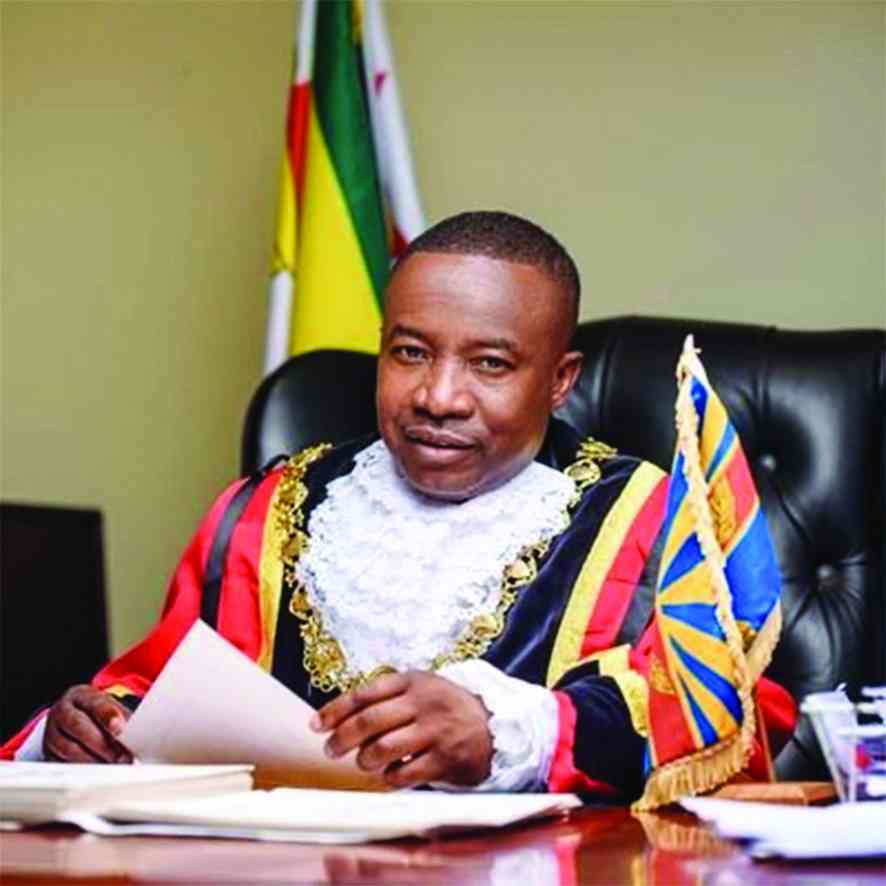
BY TATIRA ZWINOIRA
IN a tweet last Monday, Zambia’s ruling United Party for National Development spokesperson Joseph Kalimbwe noted that the kwacha is now stronger than the Zimdollar, an embarrassment for local fiscal and monetary authorities.
“1 Zambian Kwacha is equal to 21 RTGS. And then someone will come here to laugh and tell me “Hichilema (Zambian President Hakainde Hichilema) has failed”. Give me a break!!!”, Kalimbwe said in a tweet on Monday last week.
1 Zambian Kwacha is equal 21 RTGS. And then someone will come here to laugh & tell me "Hichilema has failed ". Give me a break !!!
— Joseph Kalimbwe (@joseph_kalimbwe) April 25, 2022
According to the leading Canadian-based online foreign currency website, XE, the Zambian kwacha is more valuable than the Zimbabwe dollar, with the former trading at ZMW17,02 for the US dollar. Its strength is supported by it adopting international financial institutions recommendations.
Kalimbwe’s tweet comes as the Zimdollar continues to slide against the greenback resulting in it trading for $155,14 and close to $400 in the local currency on the official and parallel forex markets, respectively.
- Chamisa under fire over US$120K donation
- Mavhunga puts DeMbare into Chibuku quarterfinals
- Pension funds bet on Cabora Bassa oilfields
- Councils defy govt fire tender directive
Keep Reading
This led to manufacturers leaking a policy discussion paper basically denouncing the Zimdollar and warning that the local currency was on the “brink of rejection” if monetary authorities did not take immediate action to deal with the slide.
“It is important that a balanced approach is taken to bring back the local currency from the brink of rejection that it faces now in the face of exchange rate instability and increasing inflation,” reads part of the policy discussion position paper from the Confederation of Zimbabwe Industries (CZI) a fortnight ago.
The Zimdollar is staring rejection by the businesses and the general public.
This is because consumers, through public and private worker unions such as the Apex Council and Zimbabwe Congress of Trade Unions have been calling for the return of US dollar wages or the equivalent value in Zimdollars.
And the equivalent value should be pegged against the parallel market rate and not the official rate, workers have insisted.
The leak from CZI, Zimbabwe’s largest business membership based organisation representing manufacturers, is telling, in that, the body regularly holds meetings with the Reserve Bank of Zimbabwe (RBZ) to make policy recommendations.
Thus, leaking the document to the media shows that manufacturers are not happy with what the RBZ is doing in dealing with the currency crisis. And this also exposes the possible behind the scenes fights.
This is why businesses are calling for the suspension of the forex auction system as it is being used to determine the value of the Zimdollar by the RBZ.
This can be seen in the differences of the official and parallel forex rates whose lack of convergence proves the official rate is not the true reflection of the Zimdollar value.
Further, XE reports that the US dollar is worth $361,90 in the local currency, thus confirming that the parallel forex rate is close to the Zimdollar’s true value against the greenback.
“Almost every major currency is controlled like a monopoly through legal tender laws. For this reason, governments and central banks control the factors that influence currency value,” American financial and economic literacy website, Investopedia, said in an article dated October 30, 2021.
“Even though these are not traditionally considered to be economic factors, they are nonetheless critical determinants.”
Using this, the central bank’s refusal to allow for a true price discovery on the forex auction places the blame for the Zimdollar’s continued depreciation at the RBZ’s feet.
CZI president Kurai Matsheza confirmed that the forex auction was not helping businesses who bid for foreign currency.
“If you look at the auction itself, broadly speaking, it has not delivered to most of our members. These are valid concerns we are raising,” he said.
“In terms of the auction, we had also recommended that until settlements are done it may be prudent not to continue building those backlogs and one way is to actually suspend the auction and clear the backlog.”
Companies bidding for foreign currency are having to wait anywhere between two weeks and two months or more to access the money they would have won.
This has negatively affected companies that rely on raw materials to produce goods causing firms to miss deadlines and also see their incomes eroded, despite an improvement in lending.
Strangely, despite all these concerns, the RBZ governor John Mangudya remains adamant that the bank and Treasury’s de-dollarisation process will go ahead.
In a widely reported response to CZI’s position paper, Mangudya said: “Government and the Bank are committed to an orderly de-dollarisation process and hence it is false that a mono-currency system is now in place. The foreign exchange auction system remains in place and will not be suspended as doing so will cause shortages of goods in the market and abet inflation. All foreign exchange accounts are safe and the Bank has no reason or appetite to ‘raid’ the accounts as alleged in the CZI paper.”
The refusal to heed the business cries is strange because the local currency has depreciated by 6 105,6% to date since it was first introduced as the RTGS dollar in February 2019, and later as the Zimdollar in June that year.
That kind of depreciation means that the Zimdollar is essentially a valueless currency, which is why international forex trackers largely do not track the local currency.
For a currency to have value, it needs significant foreign currency, market confidence or commodity backing, and the Zimdollar lacks all three.
This is why consumers, and now businesses, want the Zimdollar to be scrapped.
Local currency trackers, ZimBollar, in a tweet on Tuesday reported that part of the depreciation of the local currency is due to the growth of money supply.
“In the year 2021, Zimbabwe’s broad money supply growth grew by 131,83%, compared to Kenya which posted an 8,7% growth. From this stat it is clear that while Zimbabwe is doing well to grow its forex earnings, the pace of its money supply growth is disproportionate,” ZimBollar said.
“The disproportionate growth in money supply is what manifests itself in the runaway exchange rate! While efforts are recognisable in-terms of growing the forex cake, efforts need to be made to curb the unsustainable growth in money supply, if the exchange rate is to be stable.”
When there are more units of currency around to absorb productivity, each one ends up representing less exchange value in the market.
While the RBZ has put in place measures to support lending which came in at $198,28 billion at the end of January, it will amount to nothing if the money cannot store value.
“When productivity declines faster than the supply of money, the value of each unit of currency drops. The most common monetary phenomenon, inflation, is produced the other way around — the supply of money grows faster than productivity,” said Investopedia.
The International Monetary Fund said the only way for Zimbabwe to quickly stop the depreciation of the Zimdollar is to allow greater exchange rate flexibility and eliminate forex restrictions.
Former Finance minister, Tendai Biti, who grew the economy by double digits from 2009 to 2011 suggested floating the Zimdollar and making the US dollar the main unit of exchange.
- Follow Tatira on Twitter @tati_tatira










